Victoria Potrovitza is a contemporary abstract fiber artist who lives and works in Lancaster, California.
She received a MS Degree in Architecture from UAUIM, Bucharest, Romania. Soon after graduation, her career shifted towards textile arts. The abstract feel of architectural compositions continued to influence her work.
A significant part of her career was dedicated to wearable art using hand dyed fabric and a variety of surface design treatments, bearing mostly geometric patterns.
In the last decade, she transcended from hand painted silk wearable art making to hand embroidered canvases. Her compositions are abstract, modern, geometric, with an architectural feel.
In this interview, we learn how Victoria’s knowledge of architecture informs her abstract worldly images. She explains how her early years in Romania and her current minimalist lifestyle all help build her body of mesmerising pieces. She also reveals how none of this could happen without her red Barcelona chair!
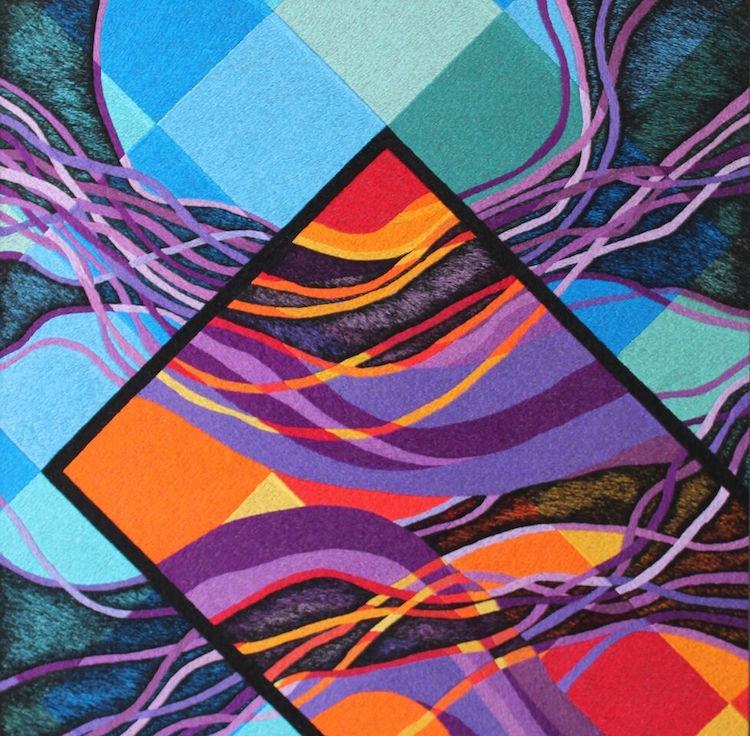
Searching for beauty and colour
TextileArtist.org: What initially attracted you to textiles as a medium?
Victoria Potrovitza: Born in Romania, I spent my early childhood in an urban area surrounded by gray concrete, utilitarian apartment buildings with scarce patches of grass and some trees.
Families resources were limited in a communist society. People were mostly thinking about survival. My parents were both engineers teaching at the polytechnic institute, so science was the talking point around the house. My mind and heart were not there.
I was searching for beauty and colour and I notice the lack of it, very early in my life. Luckily, I spent my summers at my grandparent’s house where I noticed the inherited textile pieces going back generations.
I was fascinated by the intricacy of handwoven rugs, embroidered pillows, table cloths, napkins and old folk costumes kept in boxes like hidden treasures.
Those memories captured my imagination and took me on a lifetime journey. Back then, I did not know what textile art was.
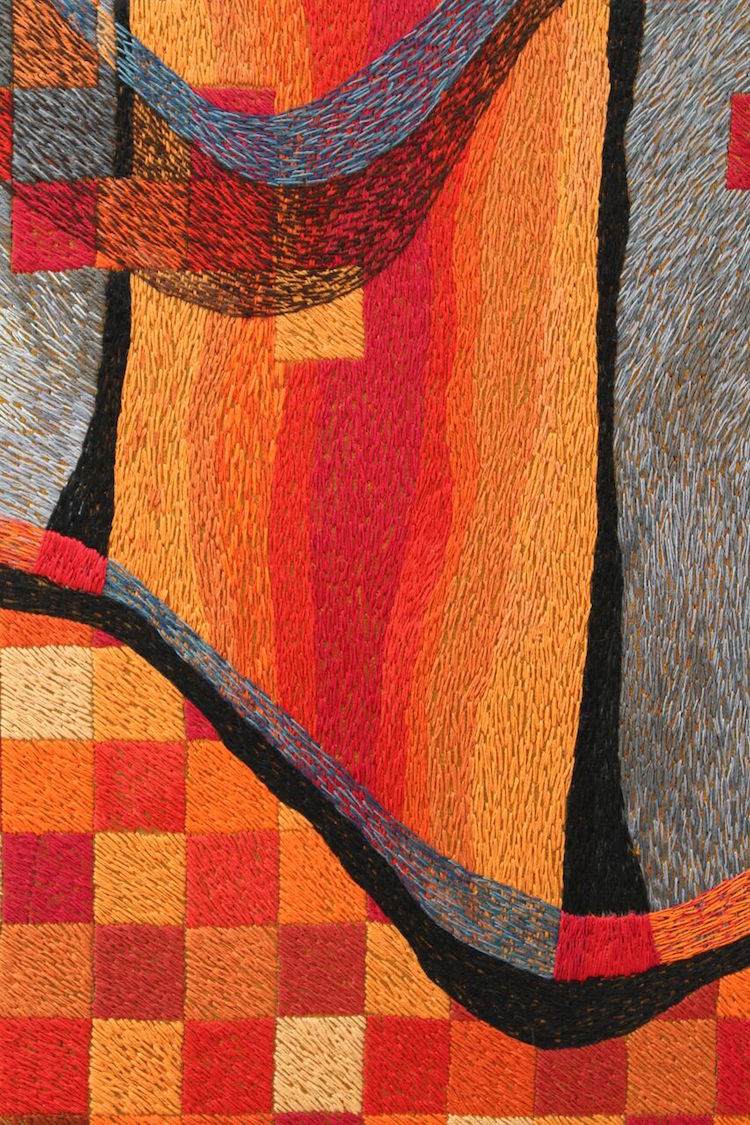
And, more specifically, how was your imagination captured by stitch?
To this day, I don’t remember who showed me for the first time how to thread a needle, how to make a knot or how to hold fabric while stitching.
What I remember is how much enjoyment I felt doing all this. The act of the threaded needle piercing the fabric, the sound of a thread sliding through the canvas, creating a line, a shape and ultimately an entire image was magic.
That’s how my journey in embroidery started, way back in my childhood.
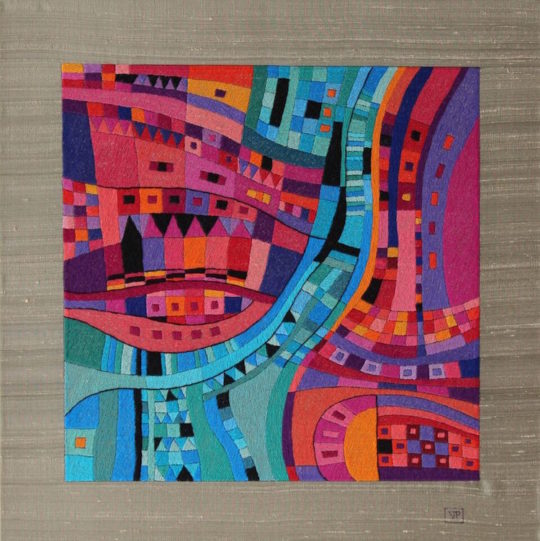
What or who were your early influences and how has your upbringing influenced your work?
While I was growing up, no one encouraged me to pursue arts but art was the only thing I was interested in. I always knew that art was my calling and I will pursue for the rest of my life.
Throughout my school years, drawing with coloured pencils, making watercolor and gouache paintings and stitching was a way to express myself.
I pursued my passions and persisted in learning more about the rich, traditional folk arts of my land, incorporating their universal language in my own designs.
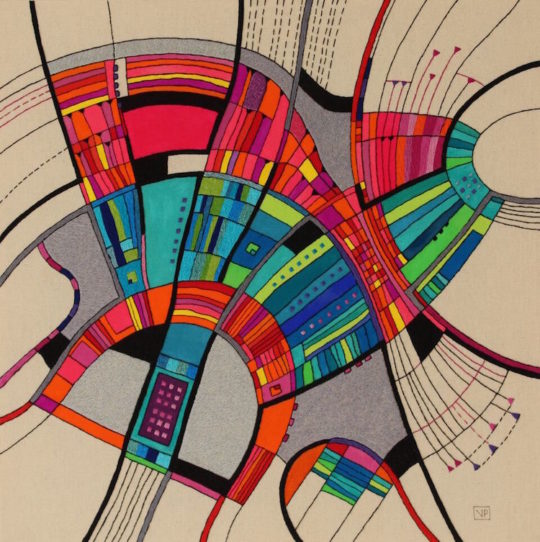
From foundations to fashion
What was you route to becoming an artist?
After high school, I chose to study architecture to enhance my artistic creativity. I took a lot of drawing classes while learning a lot about art and architecture history. The geometry of architectural design had a profound influence on my artistic vision.
After graduating, I realized that architecture is not only about rendering elevations or drawing perspectives of buildings. The technical and utilitarian part of this field were not appealing to me.
I found a local school that offered classes in decorative arts, so I took on learning tapestry. There, I learned how to dye yarn and work with hand dyed wool in my tapestries.
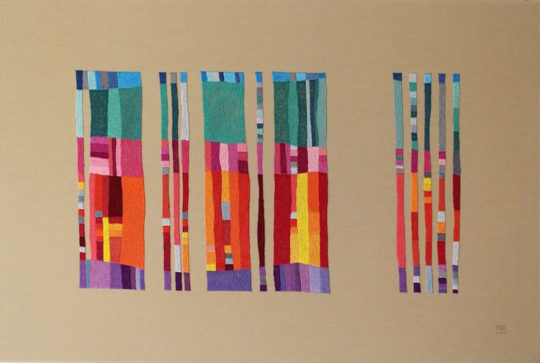
Soon, I discovered my passion for wearable art creating hand dyed knitted fashionable clothing and accessories. People started noticing their unique style and eventually I began selling them to boutiques and art galleries.
After years of uncertainty while immigrating first to Israel, my family and I arrived at our destination, California.
Transitioning and adapting to three distinct cultures was challenging to say the least. In spite all of this, I kept doing art projects.
By the early nineties I entered the wearable art market under the label ‘Bright Side Art to Wear by Victoria Potrovitza’. Twice a year, my line was featured at the ‘Pacific Designer Collection Show’ which occurred during the New York fashion week.
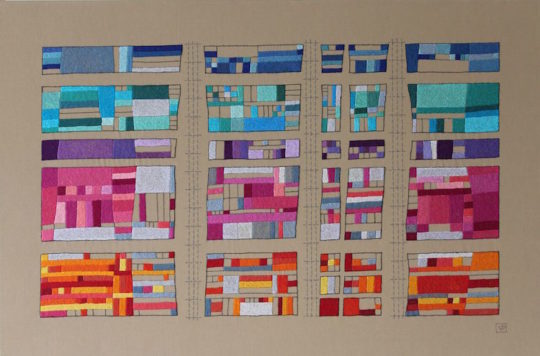
For my pieces, I used hand dyed and painted fabrics embellished with hand embroideries, beadings and block printings combined in original designs. While textiles and fashion design were important to me, I felt that doing something one my own, free of trends and deadlines, will better serve my creativity.
After ten years in the fall of 2003, I completed my last orders for the stores carrying my clothing lines and decided to take a different path.
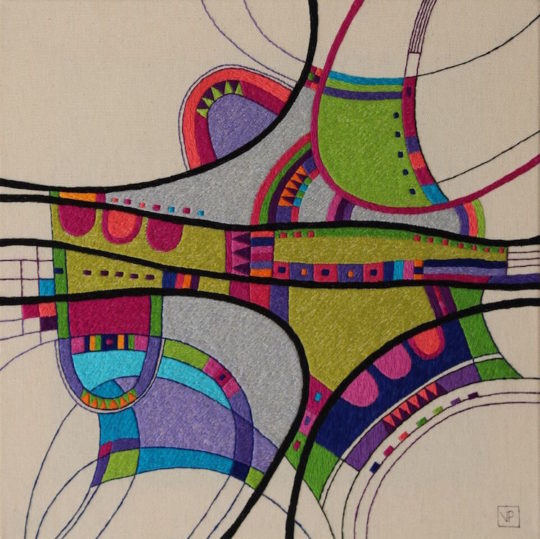
Experimenting with stitch
Tell us a bit about your chosen techniques.
After closing my wearable art business, I felt lost. Going through my old drawings, I started sketching again, searching for something new to reinvent myself.
My drawings were always abstract and geometric in nature. I remembered how, a good family friend, an accomplished painter, told me that my drawings resembled tapestries and fabric designs.
Instead of tapestry I choose to experiment with stitches. I converted pencil strokes to coloured thread lines and after few experimental pieces I started to develop my own style of hybrid drawings/stitching.
How would you describe your work and where do you think it fits within the sphere of contemporary art?
Even though I took a lot of art classes during my formal education, I always preferred abstract instead of figurative art. For me abstract, is a very personal interpretation of reality, seen only by the creator of a specific art work.
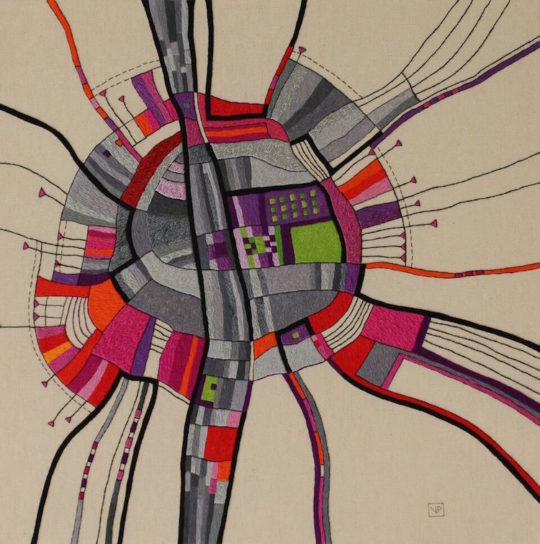
Materialising my vision from something that is only in my imagination and sharing it with others is my way of being an artist. The advancement of digital art seems to blur the lines between art and technology.
I feel that works created with traditional techniques, such as stitching, reinvented in unexpected ways can be appealing to art enthusiasts and have a place in contemporary arts.
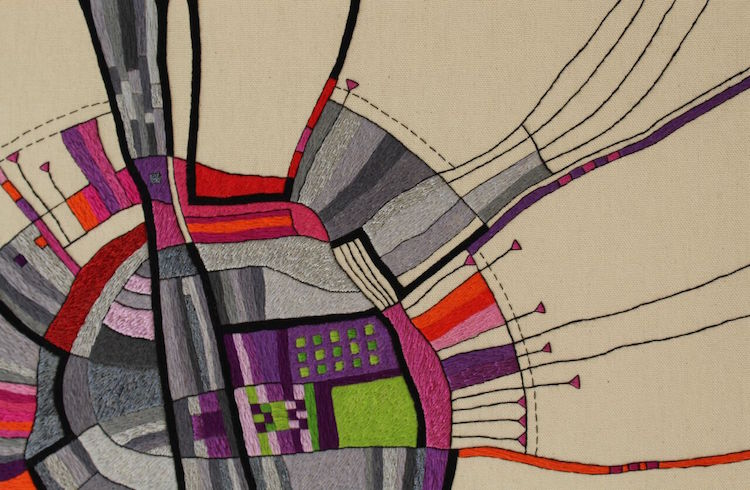
Do you use a sketchbook? If not, what preparatory work do you do?
In the beginning I sketched directly on canvas. Lately, I sketch on tracing paper until I’m very close to the desired image.
I’m working on multiple images simultaneously, exploring an idea from different angles, creating series of related works. My sketches are black and white and colour choice is made during the stitching process.
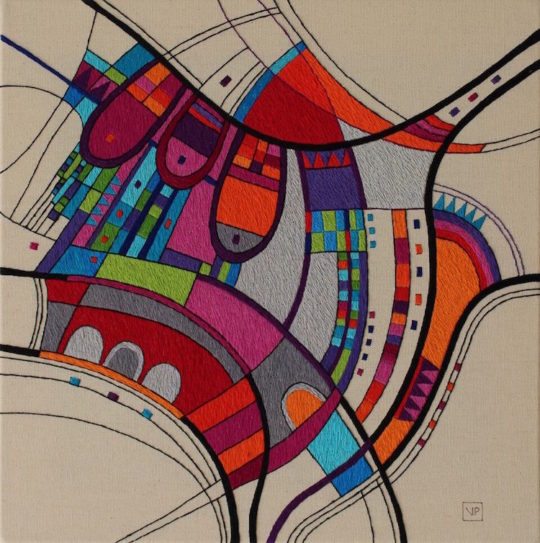
Clean lines
Tell us about your process from conception to conclusion.
Using wood stretcher bars, as a solid frame, I stretch canvas and staple it to the frame creating a sturdy background.
Next, I sketch the outline of a composition with a disappearing ink pen to allow me to make changes as the stitching progresses. Even though I make sketches of my works on paper first, no matter how detailed is the initial design by the time I finish a piece, I always make changes, so most of the time I end up with something different than the initial design.
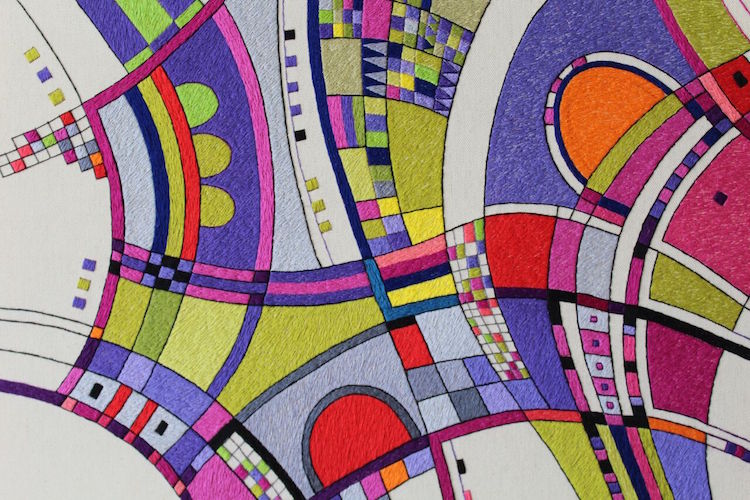
I use DMC cotton threads because they come in hundreds of colour options. I’ve used them for more than thirty years because I know that their pigments are consistent and never fade.
I keep my stitching simple. I use clean lines, no rough finishes and no hanging threads. My stitching is very dense. I don’t use any particular stitch rather I focus on the outcome that resembles a painting. I strive to do large works, mostly square up to 28 x 28 inches and some rectangular up to 22 x 36 inches.
To complete the clean look of my work I frame them in a contemporary, slim, natural, wood frame.
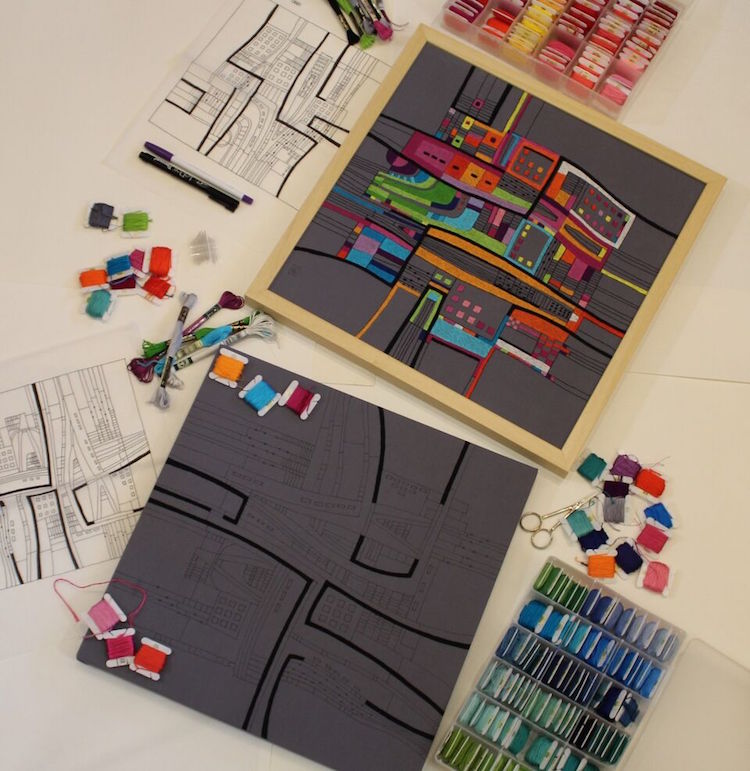
What environment do you like to work in?
I like small spaces. The cosiness of my modern leaving room is my preferred place. I work for hours in my red Barcelona chair with the TV or radio on, in the background.
All materials I use, stretcher bars, canvas, threads, etc. are always readily available to order, so I don’t keep much of them around. That complements well my minimalist life style.
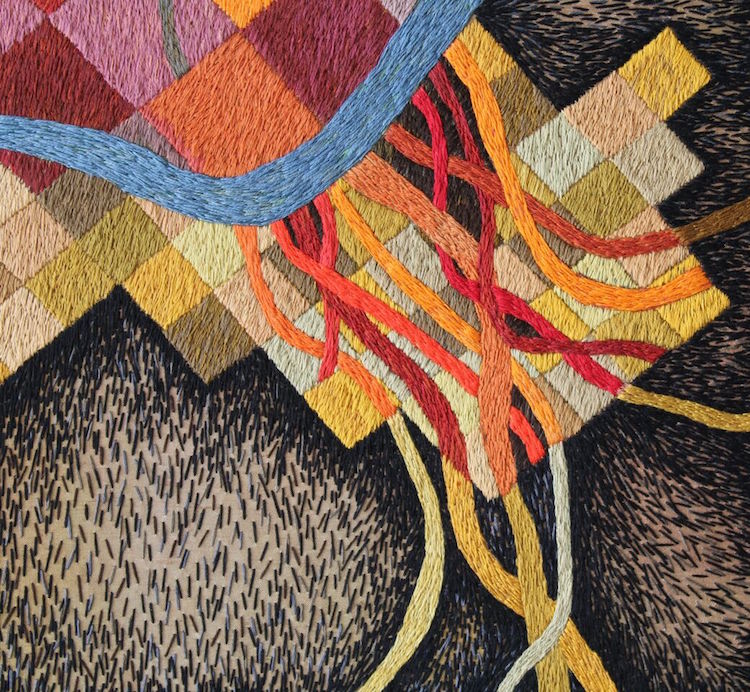
What currently inspires you?
The endless images of high quality art on Pinterest, from classic to modern, from contemporary to ancient arts are always a source of inspiration and wonder.
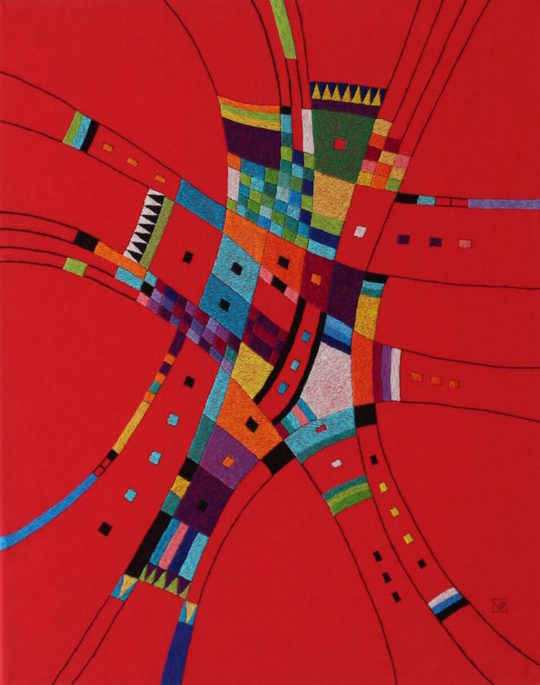
Who have been your major influences and why?
I was mostly influenced by the modernist movement at the start of the twentieth century, especially by the Bauhaus textile artists such as Gunta Stölzl, Anni Albers and Benita Koch-Otte and the fascinating carpets of Ivan DaSilva Bruins. Carrie Fisher said:
I don’t want life to imitate art. I want life to be art.
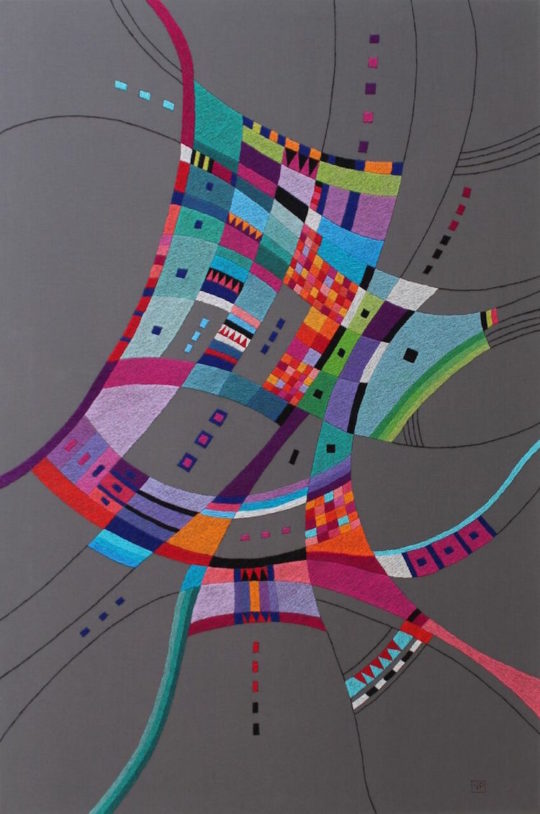
Also, I love the works of Scottish artist Eduardo Paolozzi. Other influences are the Russian avant-garde movements: suprematism and constructivism. I realised that the roots of modern, abstract art are found in the beginning of human civilisations, where pure basic shapes and colours were used to embellish everyday objects.
I’m also influenced by tribal and indigenous art because of their universal artistic languages.
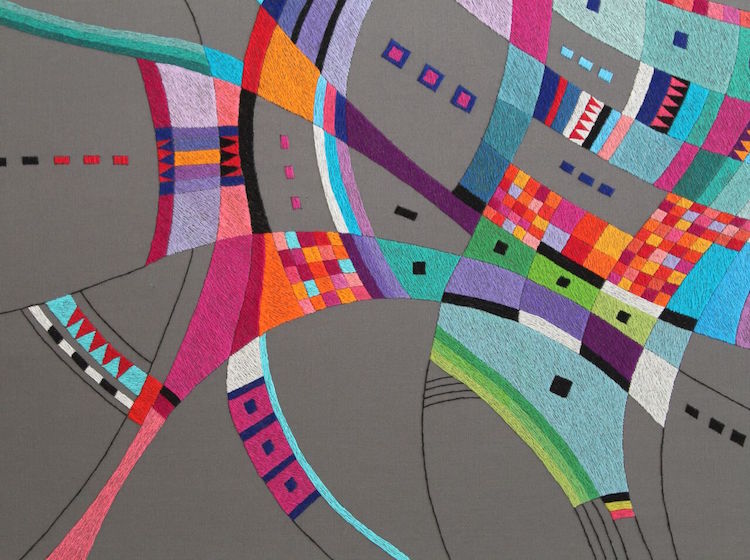
In search of new material and techniques
How has your work developed since you began and how do you see it evolving in the future?
For years, I used to cover the entire surface of the canvas with dense stitches, I layered multiple colours of threads to obtain my own shades like I would mix paint. It was a very time-consuming process that yielded only few works each year. In time, the colour palette changed. It moved from muted to vibrant, bright colours in bold compositions.
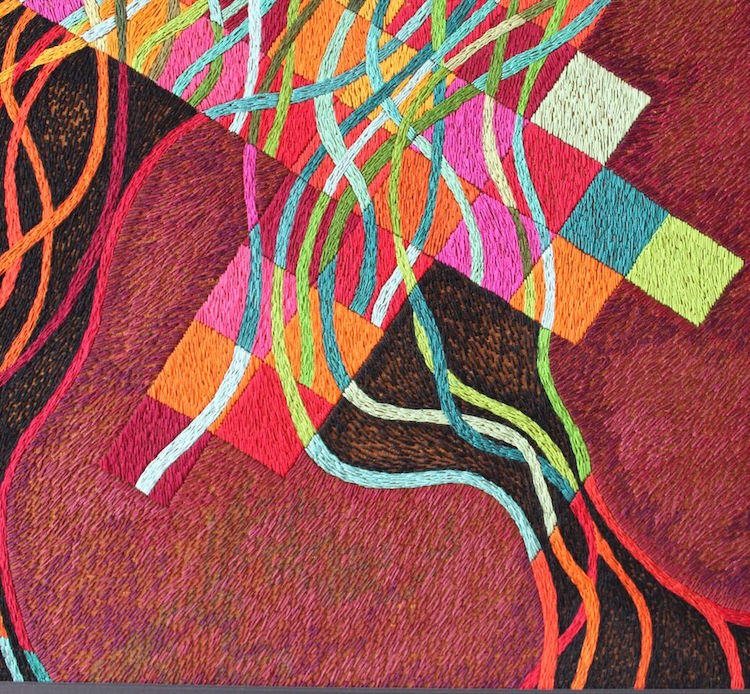
Nowadays, I’m trying to move towards a more minimalist look. In my latest series, I experimented using in the same piece acrylic paint and embroidery with metallic and high sheen rayon threads.
As I continue to develop creative ideas, I search for new materials and techniques to combine in innovative ways, in my future works.
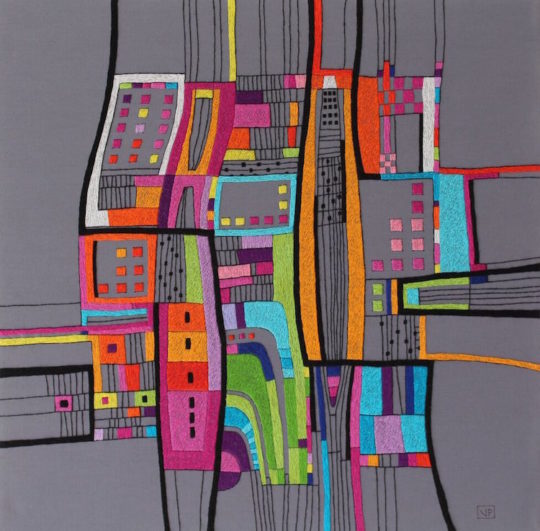
Can you recommend 3 or 4 books for textile artists?
Most inspiring and amazing:
The Quilts of Gees Bend by William Arnett, published by Tinwood Books, 2002.
Gee’s Bend: The Architecture of the Quilt by Paul Arnett, published by Tinwood Books, 2006.
And my first book about stitching:
Stitch Magic, Ideas and Interpretation with Jan Beaney and Jean Littlejohn, published by Quilter’s Resources Inc. 1999.
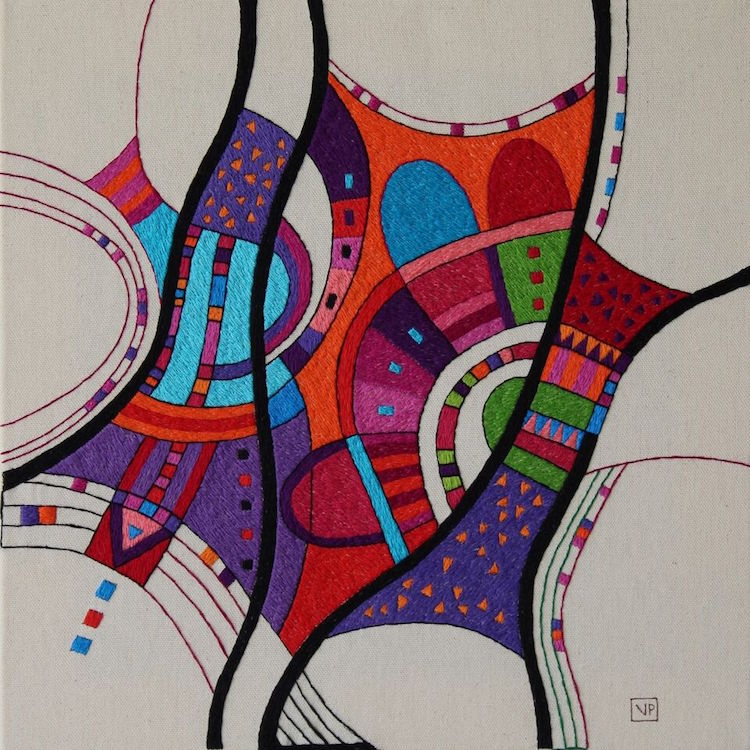
What other resources do you use? Blogs, websites, magazines etc.
The decision to pursue fiber art and hand embroidery was validated when I discovered TextileArt.org. It is a resource that I rely upon at all time.
In addition, I enjoy Fiber Art now the magazine published by Fiber Art Network and the Surface Design Journal published by the Surface Design Association. Exploring every day Pinterest is part of my morning routine.
What piece of equipment or tool could you not live without?
My old, red Barcelona chair (see photo below).
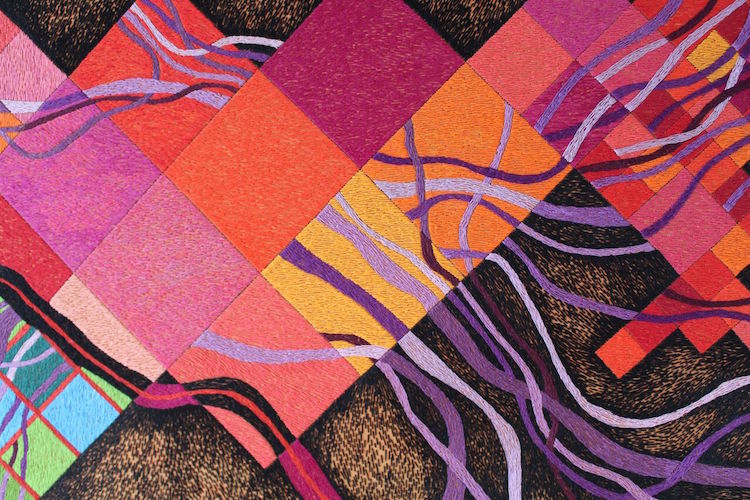
How do you go about choosing where to show your work?
As you know, fiber art shows are few and between when compared with other media. I use sites such as CAFÉ and California Art Council Artist Calls to select those show that welcome diverse media and might consider fiber art works.
Where can readers see your work this year?
My work will be displayed at the Fiber National 2018 biennial exhibition organized by Workhouse Art Center, Lorton, VA June 1th through July 29th, 2018.
I also responded to four calls for submittals this year, including the 2018 World of Threads Festival in Canada but it is too early to know if I was admitted.
However, in 2019 I will have a solo show in January at Branch Gallery, Inglewood, CA and in May at Lancaster CA Museum of Art & History.
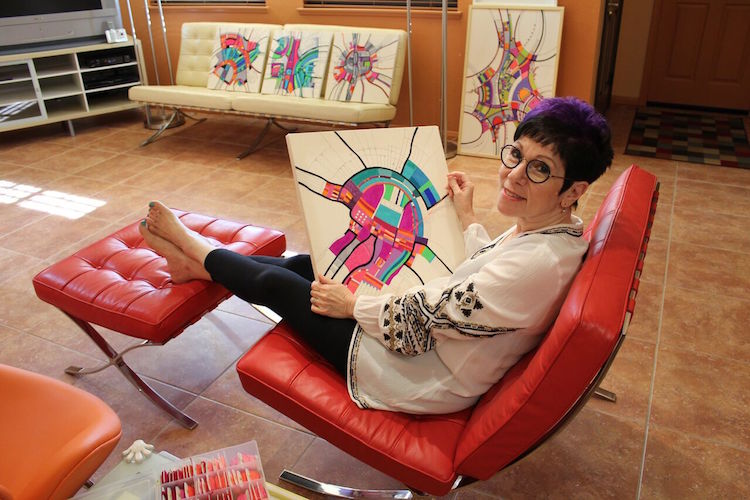
For more information visit www.victoriapotrovitza.com/ and on Pinterest and Instagram
Let us know what your favourite aspect of the artist’s work is by leaving a comment below.
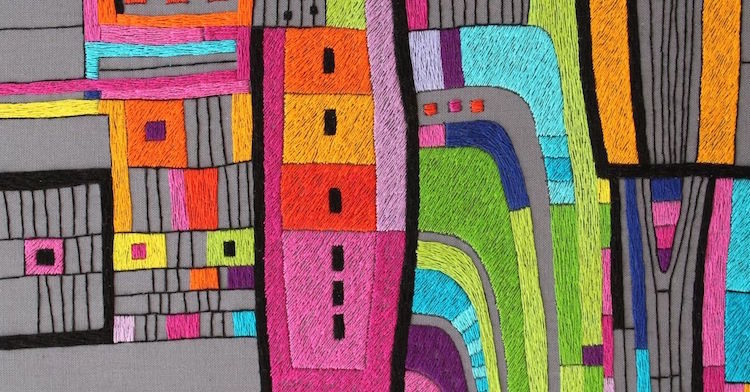

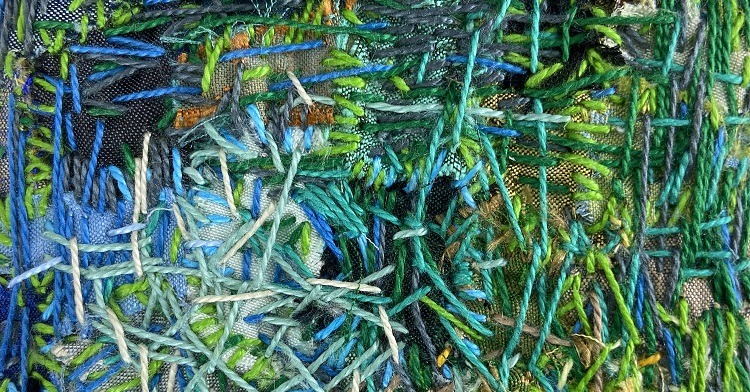
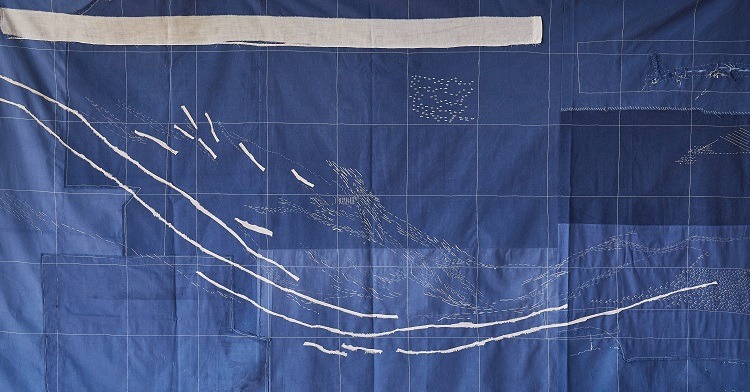
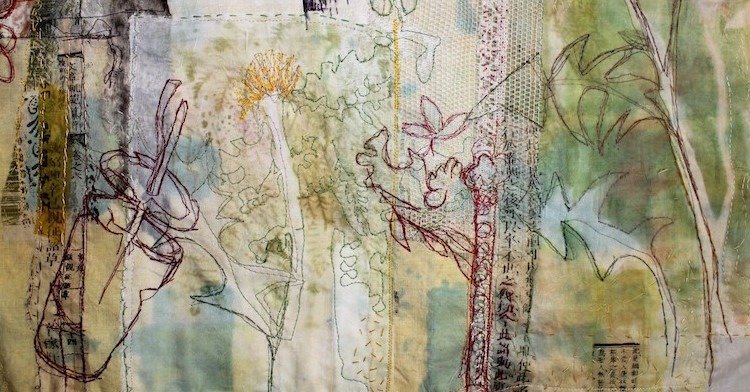
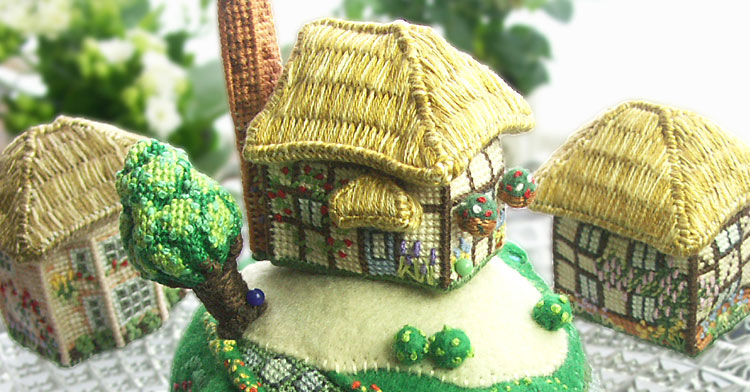
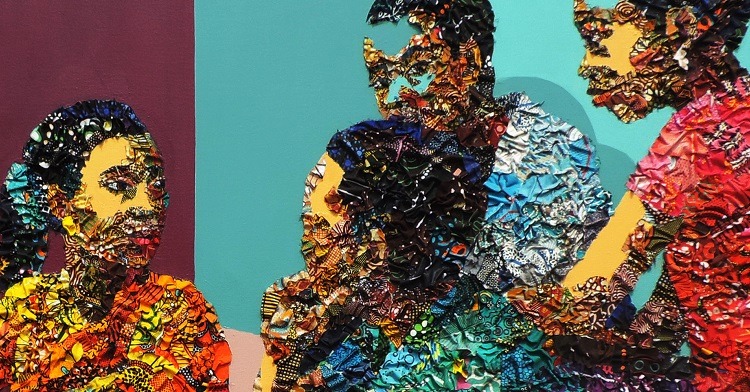
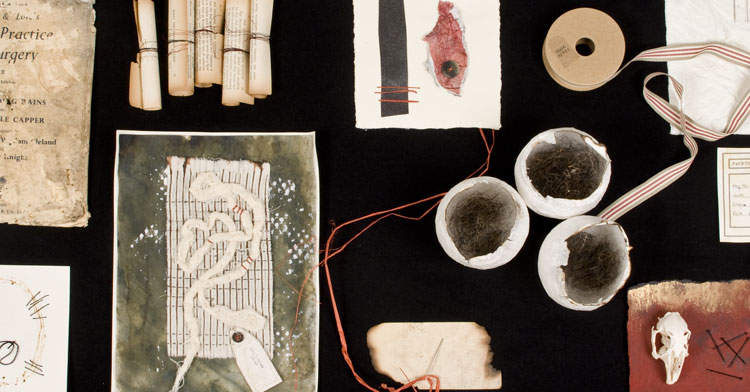
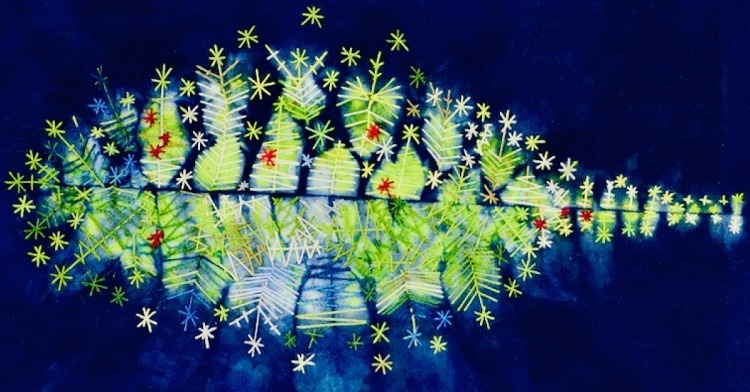
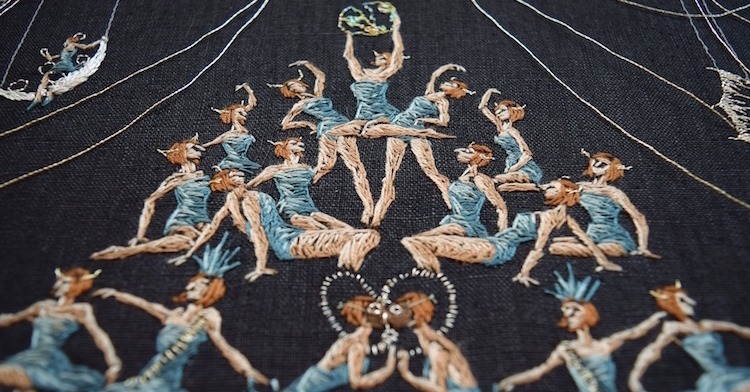

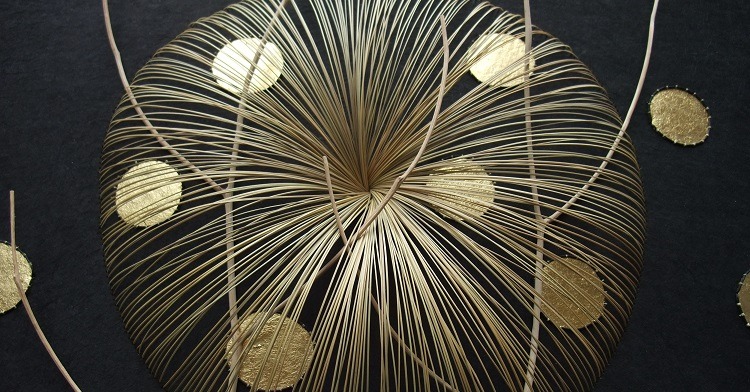
Comments